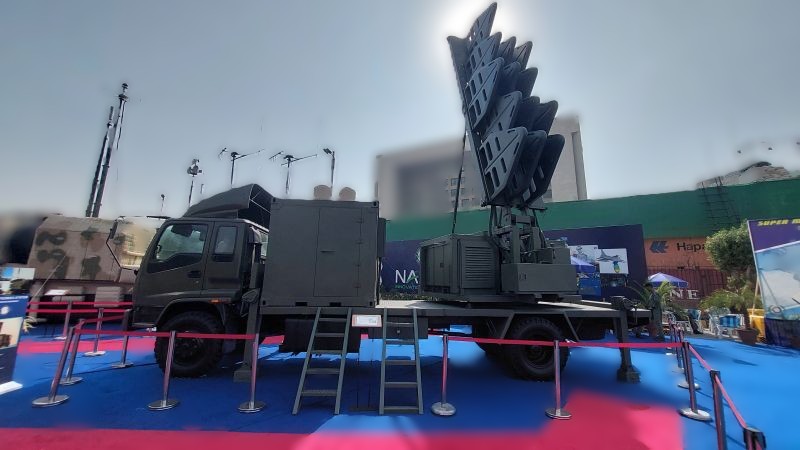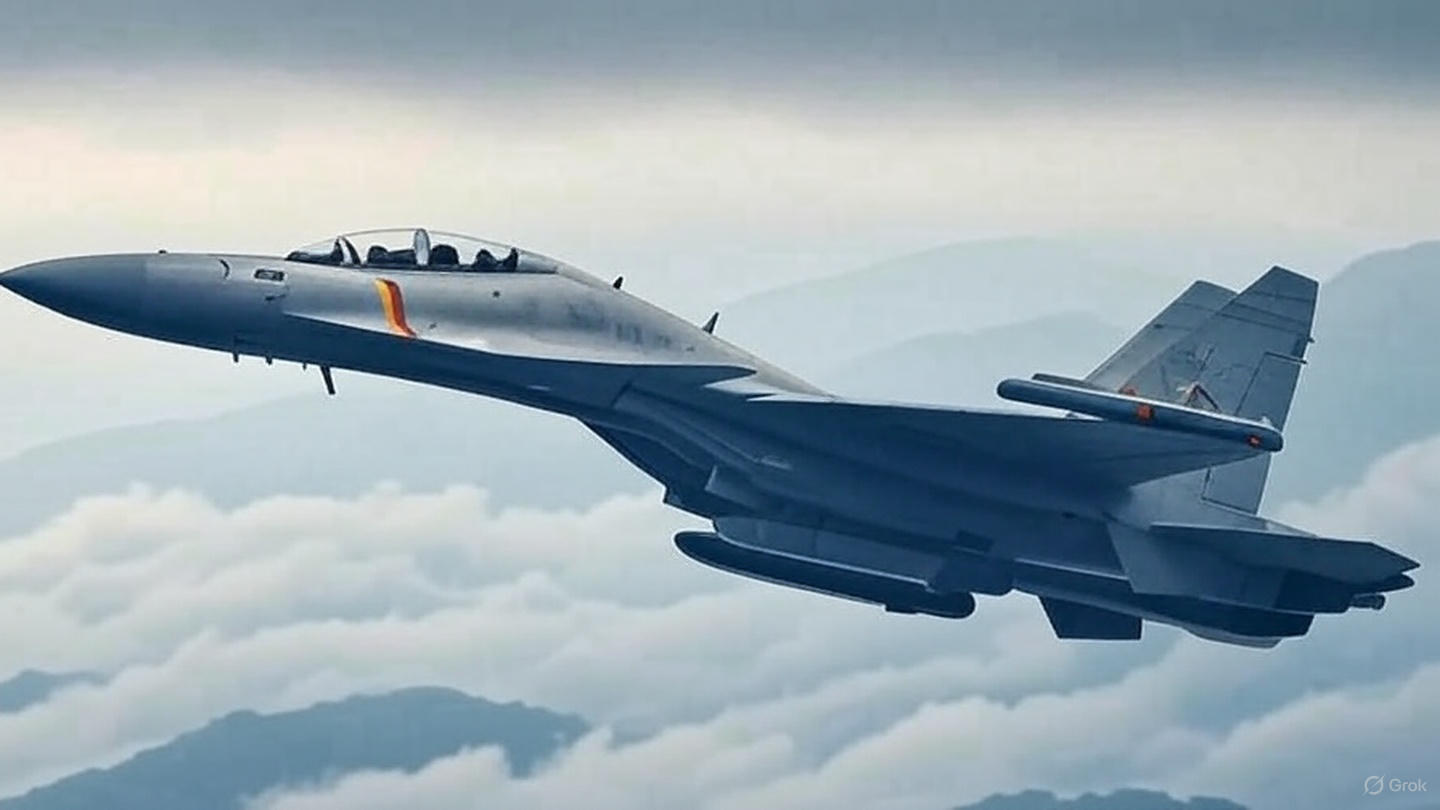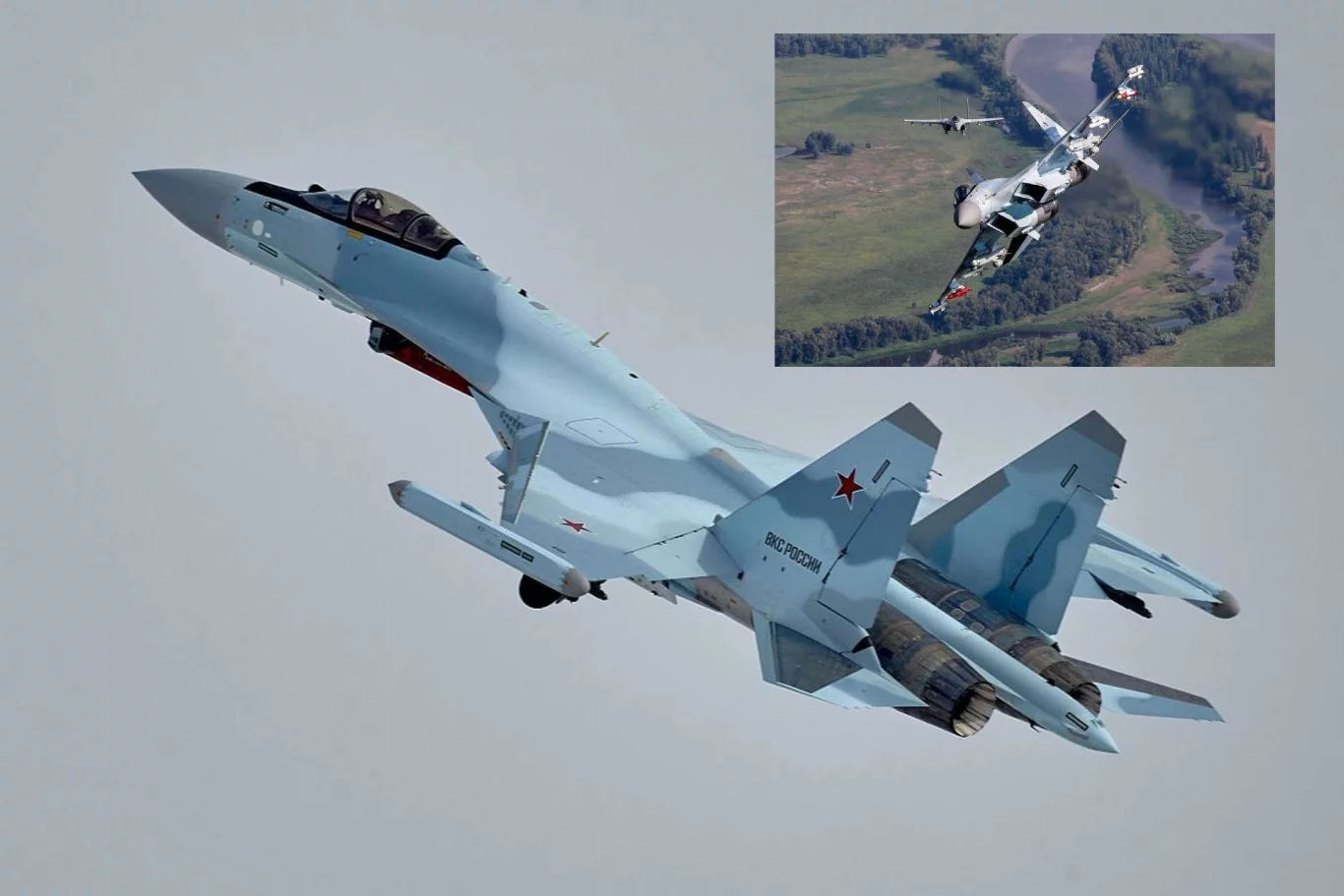In a world where modern warfare increasingly hinges on controlling the invisible waves of the electromagnetic spectrum, the Pakistan Air Force (PAF) has taken a monumental leap forward with the unveiling of the Trident EA-1. This indigenously developed, long-range electronic attack platform, introduced in August 2025, is poised to redefine Pakistan’s strategic capabilities in the Indo-Pacific region and beyond. With the ability to intercept, jam, and target enemy communications, radar, and command systems at distances up to 400 kilometers, the Trident EA-1 is a testament to Pakistan’s growing prowess in defense technology. Let’s dive into the heart of this cutting-edge system, its capabilities, and how it stacks up against global counterparts in the high-stakes arena of electronic warfare.
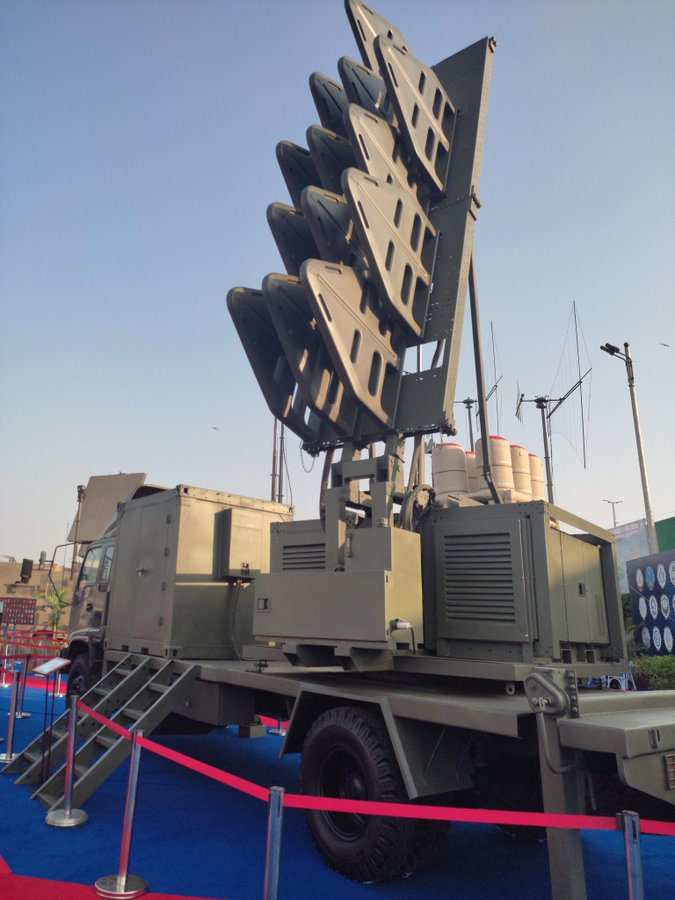
The Trident EA-1: A New Era of Electronic Warfare
The Trident EA-1, developed by the Electromagnetic Spectrum Operations (EMSO) Division of the National Aerospace Science and Technology Park (NASTP), is a mobile, all-terrain, high-power electronic attack platform designed to dominate the electromagnetic battlespace. Unlike traditional weapon systems that rely on kinetic force, the Trident EA-1 wields the power to disrupt and paralyze enemy operations by targeting their voice and data communications, relay nodes, command, and telemetry links. Its ability to jam both fixed and frequency-hopping signals—sophisticated techniques used to evade detection—makes it a formidable tool in modern warfare.
Mounted on a robust, high-mobility vehicle equipped with six powerful antennas, the Trident EA-1 is built to operate in all weather conditions and terrains, from scorching deserts to rugged mountainous regions. Its sleek, fortified design, as seen in images shared on X, underscores its role as a battlefield titan, capable of rapid deployment and sustained operations. The system’s high-power output ensures it can maintain its effectiveness over vast distances, providing Pakistan with a strategic edge in disrupting the enemy’s Observe-Orient-Decide-Act (OODA) loop—a critical process in military decision-making.
Key Capabilities of the Trident EA-1
The Trident EA-1 is a marvel of engineering, blending cutting-edge technology with strategic versatility. Here are its standout features:
- Long-Range Electronic Attack: With a reach of up to 400 kilometers, the Trident EA-1 can target enemy communications, radar, and command systems from a safe distance, making it a critical asset in both offensive and defensive operations.
- Full-Spectrum Jamming: The system can disrupt a wide range of signals, including fixed and frequency-hopping communications, which are notoriously difficult to jam. This capability ensures that adversaries cannot rely on their advanced communication systems to coordinate attacks or defenses.
- All-Terrain Mobility: Designed for high mobility, the Trident EA-1 can operate in diverse environments, from deserts to mountains, ensuring operational flexibility in complex battlefields.
- Day/Night, All-Weather Operations: Its robust design allows it to function effectively in any weather condition, day or night, making it a reliable asset in unpredictable combat scenarios.
- Indigenous Innovation: Developed domestically by NASTP’s EMSO Division, the Trident EA-1 showcases Pakistan’s growing self-reliance in defense technology, reducing dependence on foreign suppliers and enhancing national security.
These capabilities make the Trident EA-1 a pivotal tool in modern warfare, where control over the electromagnetic spectrum can determine the outcome of conflicts.
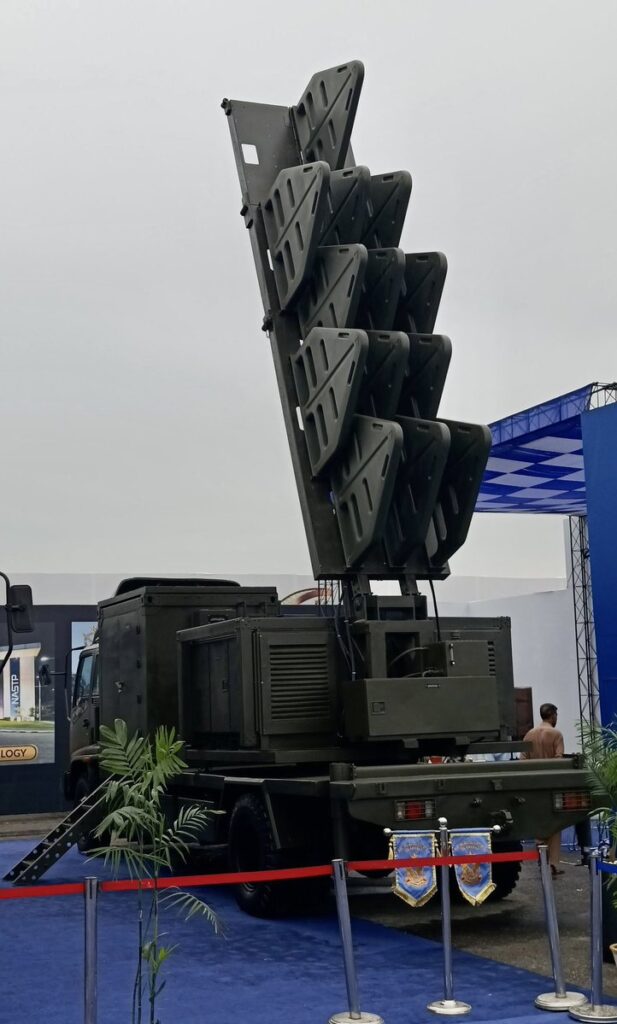
Strategic Impact on Regional Security
The introduction of the Trident EA-1 comes at a time when the Indo-Pacific region is a hotbed of geopolitical tensions. Pakistan’s strategic position, flanked by India and Afghanistan, demands robust defense capabilities to counter potential threats. The Trident EA-1 enhances Pakistan’s ability to neutralize enemy air defenses, radar systems, and communication networks, providing a significant advantage in potential conflicts.
By disrupting the enemy’s OODA loop, the Trident EA-1 can create confusion and delay in their decision-making process, giving Pakistani forces the upper hand in coordinating rapid and effective responses. This capability is particularly crucial in countering advanced air defense systems and missile networks, which rely heavily on real-time communication and radar data.
Moreover, the system’s long-range capabilities allow Pakistan to project power far beyond its borders, potentially influencing operations in contested regions like Kashmir or along the Afghanistan-Pakistan border. The Trident EA-1’s ability to operate covertly, without emitting detectable signals, adds an element of surprise, making it a stealthy predator in the electromagnetic domain.
Comparison with Global Long-Range Electronic Attack Systems
To understand the significance of the Trident EA-1, it’s worth comparing it to other leading long-range electronic attack systems deployed by major military powers in 2025. Here’s a detailed look at how it stacks up against some of the best in the field:
1. US Navy’s EA-18G Growler
- Platform: Aircraft-based (Boeing EA-18G Growler)
- Capabilities: Equipped with ALQ-249 Next Generation Jammer (NGJ), the Growler is a premier electronic attack platform capable of jamming radar and communication systems across a wide spectrum. It excels in airborne electronic warfare, providing real-time support to joint forces.
- Range: Up to 600 miles (combat radius), but requires air support and cannot match the ground-based mobility of the Trident EA-1.
- Strengths: Superior speed and altitude capabilities; integrates with advanced US naval and air operations.
- Weaknesses: High operational costs and reliance on aircraft carriers or airbases limit its deployment flexibility compared to the Trident’s ground-based, all-terrain design.
- Comparison: While the Growler dominates in airborne scenarios, the Trident EA-1’s ground-based mobility and lower operational costs make it more versatile for Pakistan’s diverse terrain and resource constraints.
2. Russia’s Moskva-1
- Platform: Ground-based passive radar system
- Capabilities: The Moskva-1 can detect and track airborne targets up to 400 km using passive radar technology, which makes it invisible to enemy detection. It serves as a command center for electronic warfare operations, capable of jamming and coordinating attacks.
- Range: Comparable to the Trident EA-1 at 400 km.
- Strengths: Advanced passive radar technology and integration with Russia’s layered air defense systems.
- Weaknesses: Limited mobility compared to the Trident EA-1’s all-terrain design; less focus on disrupting frequency-hopping signals.
- Comparison: The Trident EA-1’s ability to target both fixed and frequency-hopping signals gives it an edge in countering modern communication systems, though the Moskva-1’s passive radar technology is highly effective for stealth operations.
3. China’s DWL-002
- Platform: Ground-based passive detection system
- Capabilities: Used by Pakistan in some capacities, the DWL-002 detects and tracks airborne threats by analyzing their electronic signatures. It’s effective for countering stealth aircraft and drones but lacks the offensive jamming capabilities of the Trident EA-1.
- Range: Estimated at 300-400 km, slightly less than or comparable to the Trident EA-1.
- Strengths: Cost-effective and widely deployed; integrates well with Chinese-supplied platforms like the J-10C.
- Weaknesses: Primarily defensive; limited offensive electronic attack capabilities compared to the Trident EA-1.
- Comparison: The Trident EA-1 surpasses the DWL-002 in offensive capabilities, offering a broader spectrum of jamming and targeting options, making it a more comprehensive electronic warfare solution.
4. India’s Samyukta System
- Platform: Ground-based, consisting of 145 vehicles covering a 150 km by 70 km area
- Capabilities: The Samyukta system provides electronic surveillance, direction finding, and jamming of communication and radar signals. It’s a key component of India’s electronic warfare strategy, particularly along the Line of Control (LoC) with Pakistan.
- Range: Limited to 150 km, significantly less than the Trident EA-1’s 400 km.
- Strengths: Large-scale deployment and integration with India’s air defense network.
- Weaknesses: Shorter range and less mobility compared to the Trident EA-1; higher logistical requirements due to its multi-vehicle setup.
- Comparison: The Trident EA-1’s superior range and compact, mobile design make it more adaptable for rapid deployment and long-range operations, giving Pakistan a strategic advantage in regional conflicts.
5. Lockheed Martin’s Scaled EA
- Platform: Compact system for smaller US Navy vessels
- Capabilities: Designed to provide electronic attack capabilities to smaller ships, the Scaled EA can be installed in 60-90 days and offers jamming and self-protection features. It’s part of the US Navy’s Joint All-Domain Command and Control (JADC2) strategy.
- Range: Not specified, but likely less than 400 km due to its compact design for smaller vessels.
- Strengths: Rapid installation and integration with US naval operations.
- Weaknesses: Limited range and platform-specific design (naval vessels) reduce its versatility compared to the Trident EA-1’s all-terrain capabilities.
- Comparison: The Trident EA-1’s ground-based, long-range capabilities make it more suitable for Pakistan’s land-based operations, while the Scaled EA is tailored for naval applications.
Pakistan’s Defense Technology Leap in 2025
The Trident EA-1 is a shining example of Pakistan’s commitment to self-reliance in defense technology. Unlike its earlier reliance on foreign-supplied systems like the Chinese DWL-002 or US MQ-1 Predator drones, the Trident EA-1 is a homegrown solution that reflects Pakistan’s growing technical expertise. The system’s development by NASTP’s EMSO Division highlights the country’s investment in indigenous innovation, a critical factor in maintaining sovereignty in an increasingly volatile region.
Pakistan’s defense strategy has evolved significantly in recent years, with a focus on integrating advanced technologies like drones and electronic warfare systems to counter regional threats. The Trident EA-1 complements Pakistan’s existing arsenal, including the Burraq and Shahpar drones, and enhances its ability to conduct asymmetric warfare against more technologically advanced adversaries.
The Road Ahead: Challenges and Opportunities
While the Trident EA-1 is a significant achievement, challenges remain. The system’s long-term reliability, maintenance requirements, and integration with existing PAF operations will be critical to its success. Additionally, the rapid evolution of counter-electronic warfare technologies, such as anti-jamming systems, poses a potential threat to its effectiveness. Pakistan will need to continue investing in research and development to keep the Trident EA-1 ahead of the curve.
On the opportunity front, the Trident EA-1 opens doors for international collaboration. Pakistan’s partnerships with China and Turkey in UAV development could lead to joint ventures in electronic warfare, potentially enhancing the system’s capabilities through shared expertise. Furthermore, the system’s success could attract interest from other nations seeking cost-effective, high-impact electronic warfare solutions, boosting Pakistan’s defense exports.
Conclusion: A New Dawn for Pakistan’s Air Force
The Trident EA-1 is more than just a weapon—it’s a symbol of Pakistan’s ambition to carve out a leading role in modern warfare. By mastering the electromagnetic battlespace, the Pakistan Air Force is sending a clear message to its adversaries: it’s ready to compete at the highest level. As the system moves toward operational deployment, its impact on regional security and Pakistan’s defense strategy will be closely watched. With its long-range capabilities, all-terrain mobility, and full-spectrum jamming prowess, the Trident EA-1 is set to become a cornerstone of Pakistan’s defense arsenal, ensuring that the nation remains a formidable force in the electromagnetic age.

